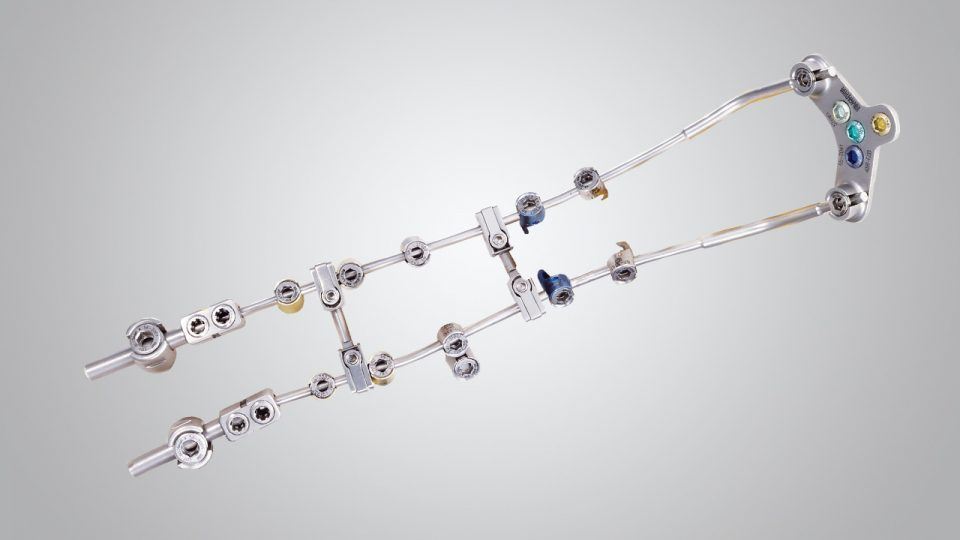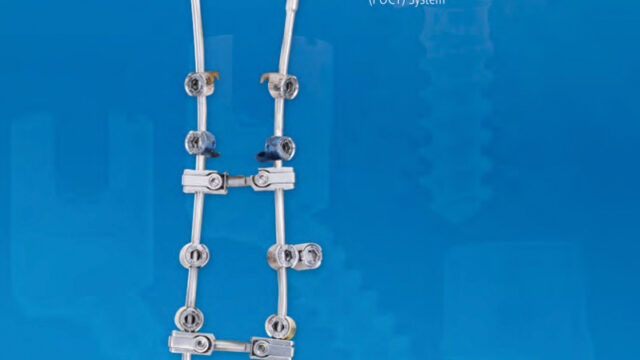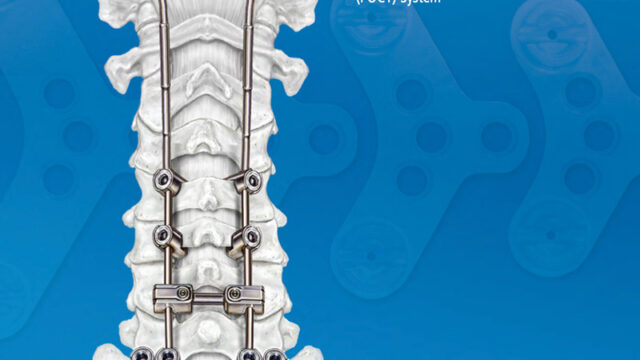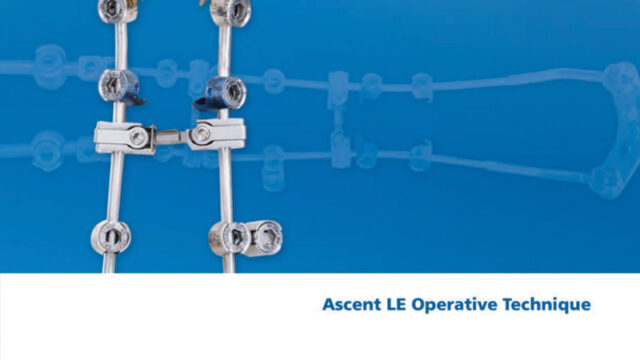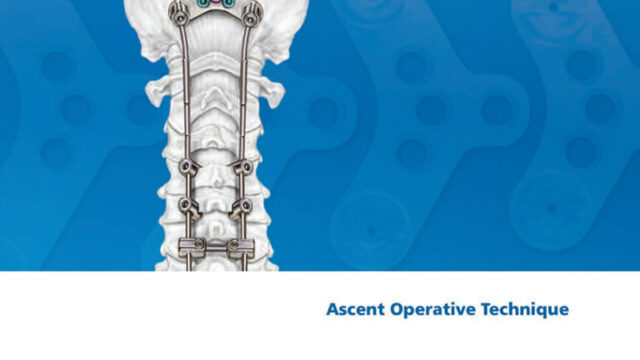
Ascent
Posterior Occipital Cervico-Thoracic System
The Ascent™ Posterior Occipital Cervical Thoracic System allows surgeons to address complicated fusion cases from the base of the skull to the thoracic region. While the occipital plate enables fixation to the occiput, the detailed engineering of the multi-axial screws and cross connectors simplify the procedure. The multi-axial screws feature 66˚ of conical angulation which minimizes rod contouring. The multi-plane adjustable cross connectors are pre-assembled and utilize a drop-in design for easy insertion.
Physician Benefits
- Occipital anchor plates accommodate varying patient anatomies
- 66˚ of conical angulation maximize range of motion & minimizes rod contouring
- No-assembly cross connector provides multi-plane adjustability: translation, rotation and angulation
- Connectors enable extended construct from thoracic to lumbar
- Strength and Flexibility
- With four plate widths (31, 37, 45 and 50mm), the Occipital Anchor Plates accommodate varying patient anatomies
- Four points of fixation to the occiput provide added security
- Occipital Plate enables fixation to extend to occiput
- 4 points of fixation
- Reliable and Flexible Tools
- Designed to simplify and streamline your procedures, Ascent POCT System instruments come in a variety of sizes and configurations
- Rod Reducer allows for simultaneous rod reduction and set screw placement
- Multi-Axial Screws and Cross-Connectors
- Multi-Axial Screws feature 66˚ of conical angulation to minimize rod contouring and make obtaining optimal bone purchase a simpler task
- Screws available in 3.5mm and 4.0mm diameters and are color-coded for easy identification
- Multi-Axial Adjustable Cross Connectors are pre-assembled and utilize a drop-in design to add additional torsional rigidity to the constructTop-loading/top-tightening design also enhances medial-lateral variability and increases flexibility at transitional segments, enabling translation, rotation and angulationTogether, the screws and cross connectors increase efficiency while decreasing procedural steps
